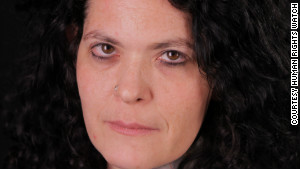Eight-year-old girl China's youngest lung cancer case
BEIJING (Nov 5, 2013): An eight-year-old girl has become
China's youngest lung cancer patient, reports said, with doctors blaming
pollution as the direct cause of her illness.
The girl, whose name was not given, lives near a major road in the eastern province of Jiangsu, said Xinhuanet, the website of China's official news agency.
It quoted Jie Fengdong, a doctor at Jiangsu Cancer Hospital in Nanjing, as saying she had been exposed to harmful particles and dust over a long period of time.
Lung cancer cases among children are extremely rare, with the average age for diagnosis at about 70, according to the American Cancer Society.
But the incidence of the disease has skyrocketed in China as the country's rapid development has brought with it deteriorating air quality, particularly in urban areas.
Lung cancer deaths in China have multiplied more than four times over the past 30 years, according to Beijing's health ministry. Cancer is now the leading cause of death in the smog-ridden capital.
The report of the eight-year-old girl's diagnosis comes after choking smog enveloped the northeastern city of Harbin two weeks ago, bringing flights and ground transport to a standstill and forcing schools to shut for several days, with visibility in some areas reduced to less than 50 metres.
At the height of the smog, the city's levels of PM2.5 - the smallest, most dangerous type of airborne particle - reached 1,000 micrograms per cubic metre, 40 times the World Health Organisation's recommended standard.
High levels of PM2.5 have been linked to health problems including lung cancer and heart disease. – AFP
http://www.thesundaily.my/news/873831
The girl, whose name was not given, lives near a major road in the eastern province of Jiangsu, said Xinhuanet, the website of China's official news agency.
It quoted Jie Fengdong, a doctor at Jiangsu Cancer Hospital in Nanjing, as saying she had been exposed to harmful particles and dust over a long period of time.
Lung cancer cases among children are extremely rare, with the average age for diagnosis at about 70, according to the American Cancer Society.
But the incidence of the disease has skyrocketed in China as the country's rapid development has brought with it deteriorating air quality, particularly in urban areas.
Lung cancer deaths in China have multiplied more than four times over the past 30 years, according to Beijing's health ministry. Cancer is now the leading cause of death in the smog-ridden capital.
The report of the eight-year-old girl's diagnosis comes after choking smog enveloped the northeastern city of Harbin two weeks ago, bringing flights and ground transport to a standstill and forcing schools to shut for several days, with visibility in some areas reduced to less than 50 metres.
At the height of the smog, the city's levels of PM2.5 - the smallest, most dangerous type of airborne particle - reached 1,000 micrograms per cubic metre, 40 times the World Health Organisation's recommended standard.
High levels of PM2.5 have been linked to health problems including lung cancer and heart disease. – AFP
http://www.thesundaily.my/news/873831





















































































